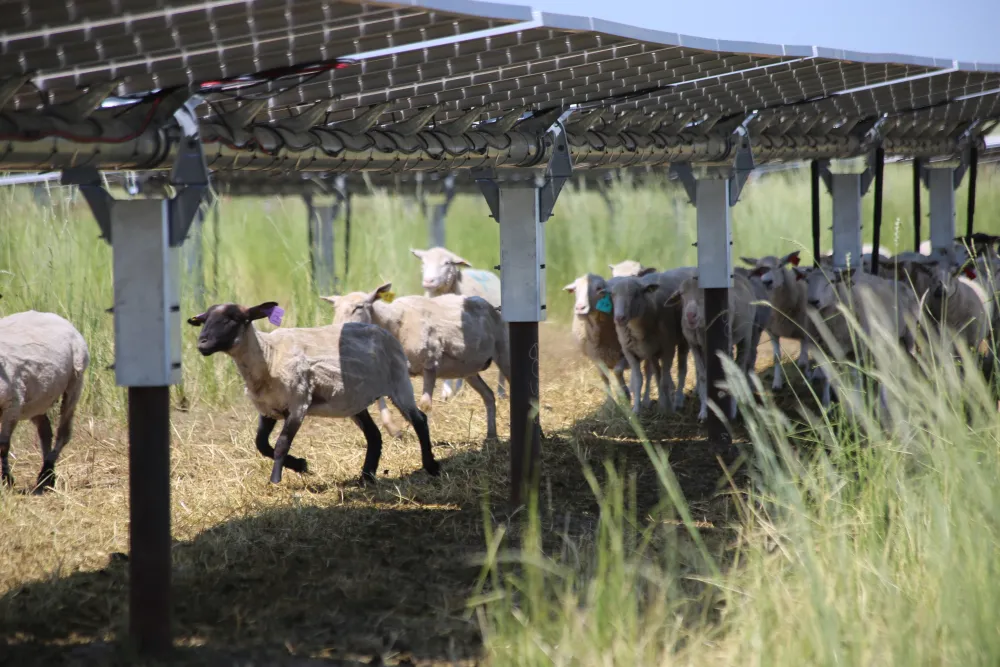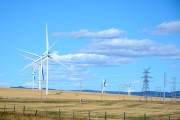When Eric Steeves first got a phone call from a company to host solar panels on his land, he laughed because he thought they were joking.
“I did not take it seriously at all,” says the fifth-generation Alberta farmer — who now hosts a portion of the country’s largest solar farm on his land.
That first call was made in 2017, before Alberta’s renewable energy boom made an approach from a developer more common. Since then, six gigawatts (GW) of wind and solar have been built in the province. (One GW of solar produces the same amount of electricity in a year as 240,000 average Alberta homes consume, while one GW of wind would power 550,000 homes.)
While other provinces and territories are clamouring for new wind and solar projects, the long shadow of Alberta’s renewable energy moratorium has stifled the current investment appetite. Wind, solar and batteries are some of the lowest-cost options for new electricity, though, so the potential for Alberta landowners and communities to benefit from the sector still exists.
New Pembina Institute guide helps landowners with renewable energy project proposals
But it’s a steep learning curve for farmers to go from growing cereal crops or raising cattle to suddenly figuring out how to handle a potential wind or solar project on their land. The Pembina Institute has released a new resource to help with that — a Guide to Renewable Energy and Battery Storage: How Alberta landowners can reap the benefits of hosting clean energy.
Steeves had a sneak peek at the guide and wishes he’d had something similar to draw on.
“If I would have had a resource tool like that back in 2017, that would have saved us months of discussion and research to try and figure things out.”
Steeves said the guide is perfectly suited to getting farmers thinking about the right questions so they can get on track to protect their family farms. Because that’s how Steeves thinks about renewable energy: as an opportunity to diversify income with renewable energy lease payments and protect legacy farms from the drought years.
Lease payments from renewable energy projects provide income cushion
When Greengate approached him and his neighbours to build the Travers solar farm, they were in the midst of a drought. In fact, between 2017 and 2024 there was only one non-drought year.
“Being able to have renewables as the backup — the way I look at it is it's basically our insurance to keep farming.”
The solar panels are also just plain good for his land, actually increasing its productivity, he says. They act both as a windbreak and shade the ground to preserve moisture. It’s the modern equivalent of the caragana his great-grandfather planted in the 1930s and ‘40s to act as shelter belts, he says, only better because the screw piles don’t draw moisture away from the grass the way the caraganas did.
Altogether, Steeves says he would encourage other landowners to give it some serious thought. And he encourages developers to spread out their projects so that lease payments go to as many landowners as possible, in order to boost support for the projects in the communities where they operate. By doing that, developers build community-wide support for additional projects. Communities, in turn, benefit from hosting additional projects through tax revenues and community benefit agreements.
What's in the guide?
All renewable energy projects in Alberta need the consent of private landowners as hosts. For those wanting to consider hosting a project, the Pembina Institute guide breaks down insights and advice for landowners and communities into sections. It starts by grounding readers with an explanation of what renewable energy is and how the industry has evolved in Alberta in recent years. It talks about the benefits of wind and solar energy, potential impacts and how to reduce them, as well as how landowners can make sure they get a deal that is best for them.
It then outlines the steps involved in developing a renewable energy project, from site selection to reclamation.
There’s also a section for municipalities and how they can get involved in renewable energy development. Last year, Alberta municipalities collected $54 million in municipal tax revenues, according to the Business Renewables Centre-Canada, so there’s good reason to welcome projects to their jurisdictions.
Another helpful feature of the guide is the lists of questions found in the appendices. These lists offer solid starting points for conversations with developers, including questions to ask developers about the project itself, to questions on long lease agreements.
The guide, funded by the Alberta Real Estate Foundation, provides a solid basis for a successful partnership between landowners, communities and wind and solar project developers.
Steeves said he highly endorses this type of guide to get farmers on track to get into the right partnerships with developers.







